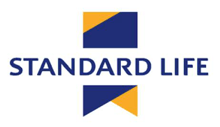Watching the Clock at Standard Life

"We know at any time where we're at rather than having to wait for information to be entered."
Yves Boislard, applications support manager
When you have multiple projects on the go at once, keeping track of how much time is spent on each one becomes even more important and can translate into a lot of paperwork.
Montreal-based insurance company Standard Life has 425 employees in IT, operations, development and telecommunications departments working on many internal projects at a time.
In November of 2000, the insurer decided it needed a better method of tracking the time it spends on projects in conjunction with its use of Microsoft Project. Standard Life chose HMS TimeControl software to make operations more efficient and to streamline internal processes.
Every week the software automatically records the time spent on each project, measures actuals versus budgets - enabling managers to tailor projects accordingly - and saves Standard Life time in paying bills from outside contractors and consultants. The software gives managers an overall view, on one screen, of the status and time spent on each project.
Projects in progress at the Standard Life range in the $1 million to $8 million range, said Lyne Raymond, senior project manager, and can run anywhere from one to two years. "We also have smaller projects for the evolution of existing systems.
One of the insurer's major projects was the installation of PeopleSoft financials in June 2001, for example, said Yves Boislard, applications support manager.
During the TimeControl pilot, employees entered their time spent on a project and it was transferred to MS Project, he said. "Looking at inconsistencies with estimated time and actual time wasn't done in the pilot, but it's being done in production."
After the employee enters their hours worked on the project, the time spent has to be approved by a supervisor, and then the data is transferred to MS Project. "It avoids having to re-enter the time in MS Project," said Boislard. Of course there are adjustments and inconsistencies with what's projected and the actual. That's controlled with MS Project."
n addition to saving time that would be spent re-entering information into MS Project, TimeControl has reduced the amount of paperwork at Standard Life, by giving the insurer better control over employee time sheets. "TimeControl is then used to prepare accounting reports," said Boislard. It's also used for billing, particularly for paying external consultants. It also saves time because employees themselves are entering their hours directly into the system, which does analysis of the data. "If we didn't have TimeControl, we'd have to make sure all of the time sheets were received from every employee and approved," he said. Doing it manually would take days and the quality of information wouldn't be as high. "The time that would have been spent entering information is now spent on other responsibilities."
TimeControl also allows Standard Life to quickly find out who's not filing their hours on time or not at all, and managers can see at any given moment how much time is being spent on project.
"We know at any time where we're at rather than having to wait for information to be entered."
Yves Boislard, applications support manager
For comparisons of projected costs versus actual costs, Standard Life uses MS Project. "Then you get a good overall picture without having to try to merge different services" said Boislard.
Prior to implementing TimeControl, Standard Life had been using another piece of software, but the insurer needed something that could integrate with MS Project, said Raymond. "That was the biggest advantage."